
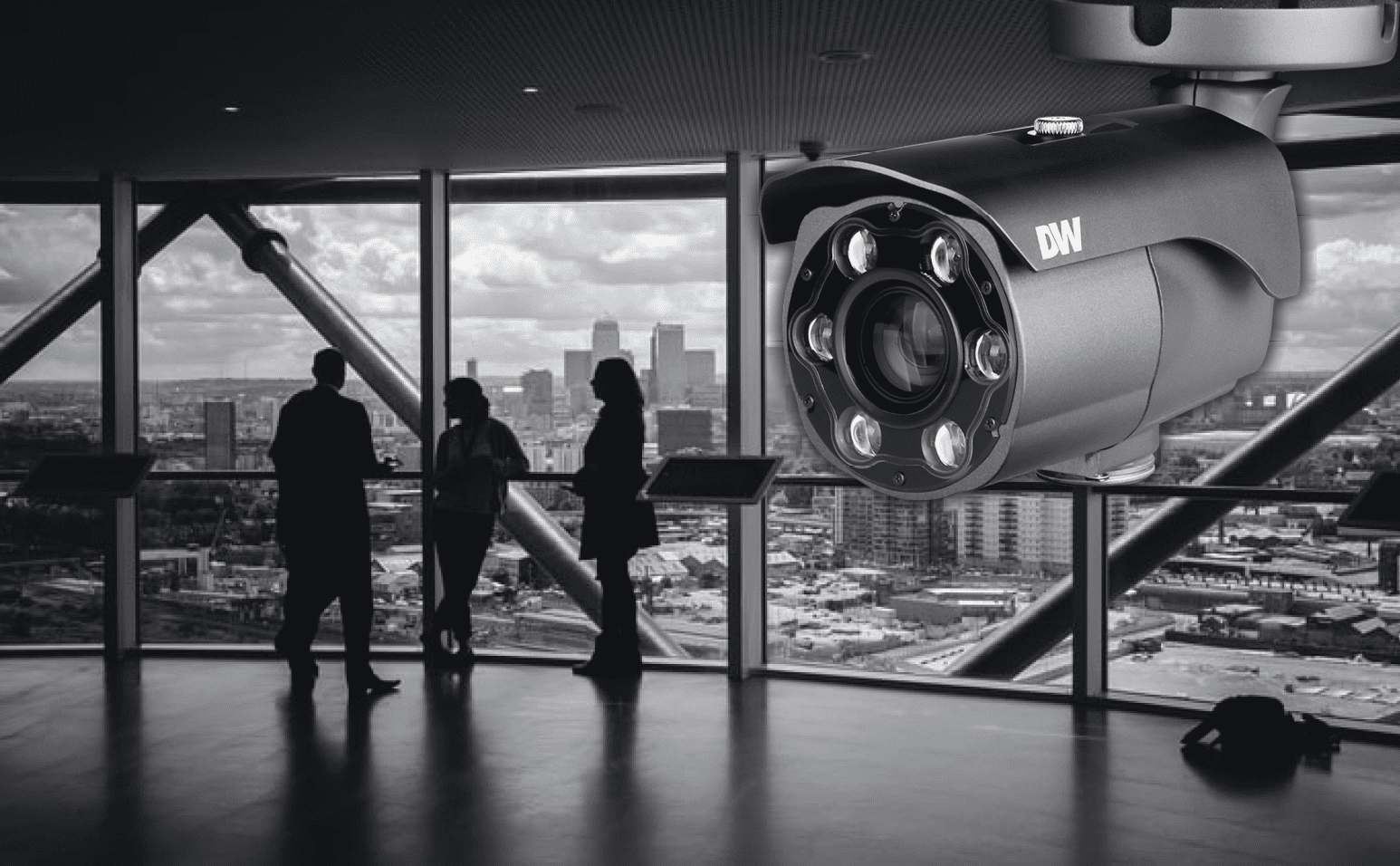 The game has changed regarding business video surveillance cameras. Bulky, low-quality, and expensive technology used to dominate the market on the sole merit that it was the only solution commercially available. Even then, the businesses that could afford a top-end video system were hamstrung by the limitations of the time. The variety of cameras available were severely limited, which meant the true surveillance abilities of the systems were limited in and of themselves.
The game has changed regarding business video surveillance cameras. Bulky, low-quality, and expensive technology used to dominate the market on the sole merit that it was the only solution commercially available. Even then, the businesses that could afford a top-end video system were hamstrung by the limitations of the time. The variety of cameras available were severely limited, which meant the true surveillance abilities of the systems were limited in and of themselves.
The new millennium brought with it industry-changing innovations in the world of cameras. IP and networking technologies improved camera quality with cost decreases over time. Dusty analog systems of yore fell by the wayside in favor of high-tech wireless technology. Perhaps most importantly from a security perspective, the reliance on old-school box cameras was challenged by an abundance of newer, more specialized cameras for more complete surveillance coverage.
Nowadays, there are many specialty cameras available with which to protect your business, but by design, not every surveillance camera is created equally. Cameras vary in performance capabilities, storage options, and whether they should be installed in or out of doors. Perhaps most importantly, cameras are divisible by their basic type and function, with each type better at certain types of protection. The complexities that arise from the sheer number of camera types leave a host of business owners wondering: what are the differences between the most popular camera types, and which surveillance cameras work best for my specific protection needs?
Discreet, dynamic dome cameras
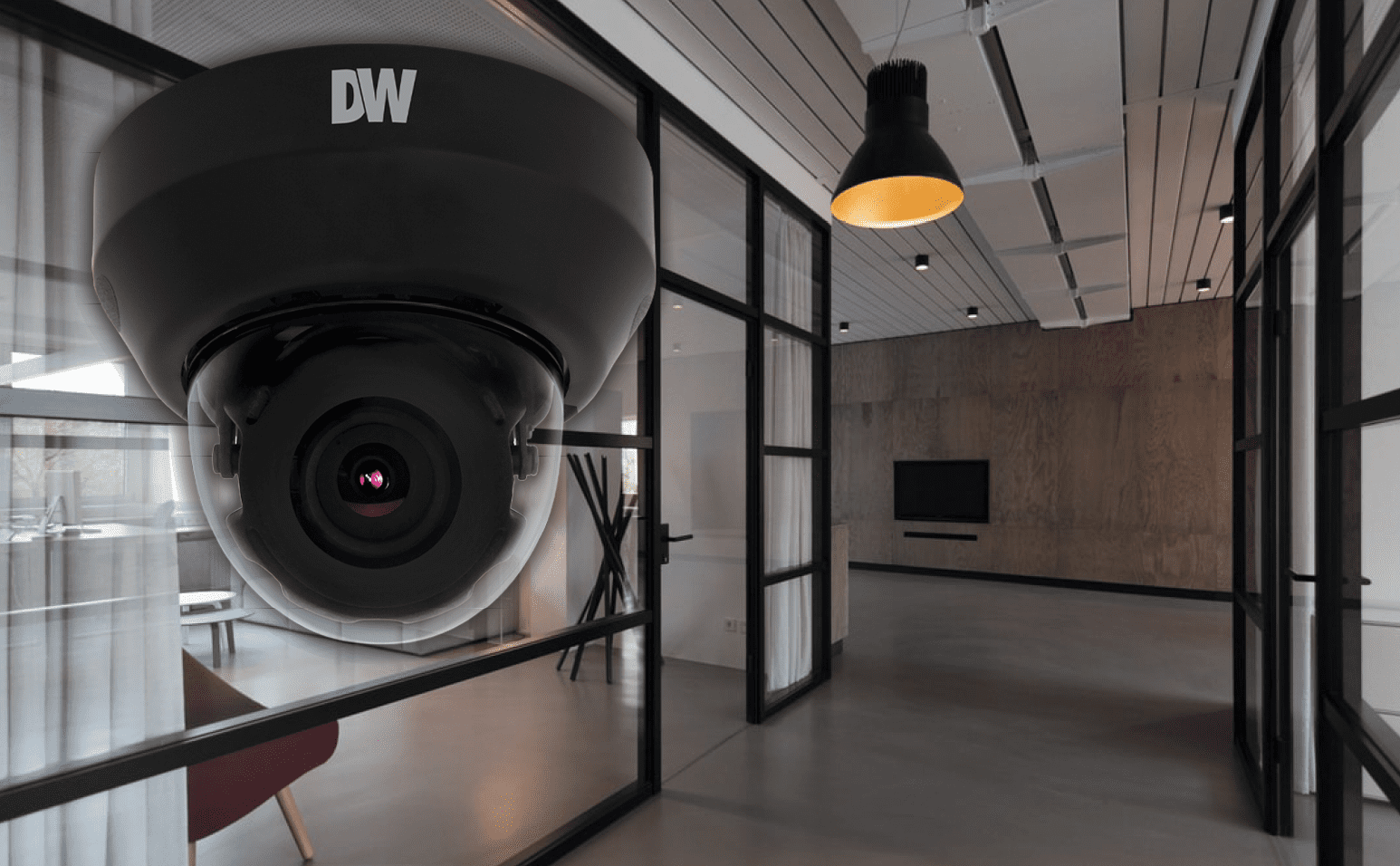 Specialty cameras exist for unique protection needs, but the most popularly installed business security cameras fall within one of four categories: domes, bullets, PTZs (pan-tilt-zoom), or multi-sensors.
Specialty cameras exist for unique protection needs, but the most popularly installed business security cameras fall within one of four categories: domes, bullets, PTZs (pan-tilt-zoom), or multi-sensors.
Dome cameras are immediately recognizable because they look—well, they look like domes. Designed with subtlety in mind, dome cameras can be positioned on walls or ceilings to provide wide-angled coverage of a large area. While they sometimes require more intensive installation than a bullet camera, they are often favored in interior settings due to their sleek design and lower profile. Unlike “box” cameras of old, domes are designed to make it difficult for passersby to determine which way the lens is pointed. This feature makes a dome camera the perfect option for covering sensitive areas such as bank lobbies to make it more difficult for criminals to hide their faces.
Dome cameras are common choices in businesses of all varieties specifically for their versatility. Their wide-angles and ability to be ceiling-mounted make them popular choices in lobbies, storerooms, sales floors, or any other wide-open space. Dome cameras are also capable of supporting a number of features, including weatherproofing for outdoor use, infrared and low-light “night vision” options, and vandal resistance for more overt installations. While other popular camera models often include some of these features as well, it’s hard to find a better balance of aesthetics, performance, and discretion than the dome.
Burglar beware: the bullet camera
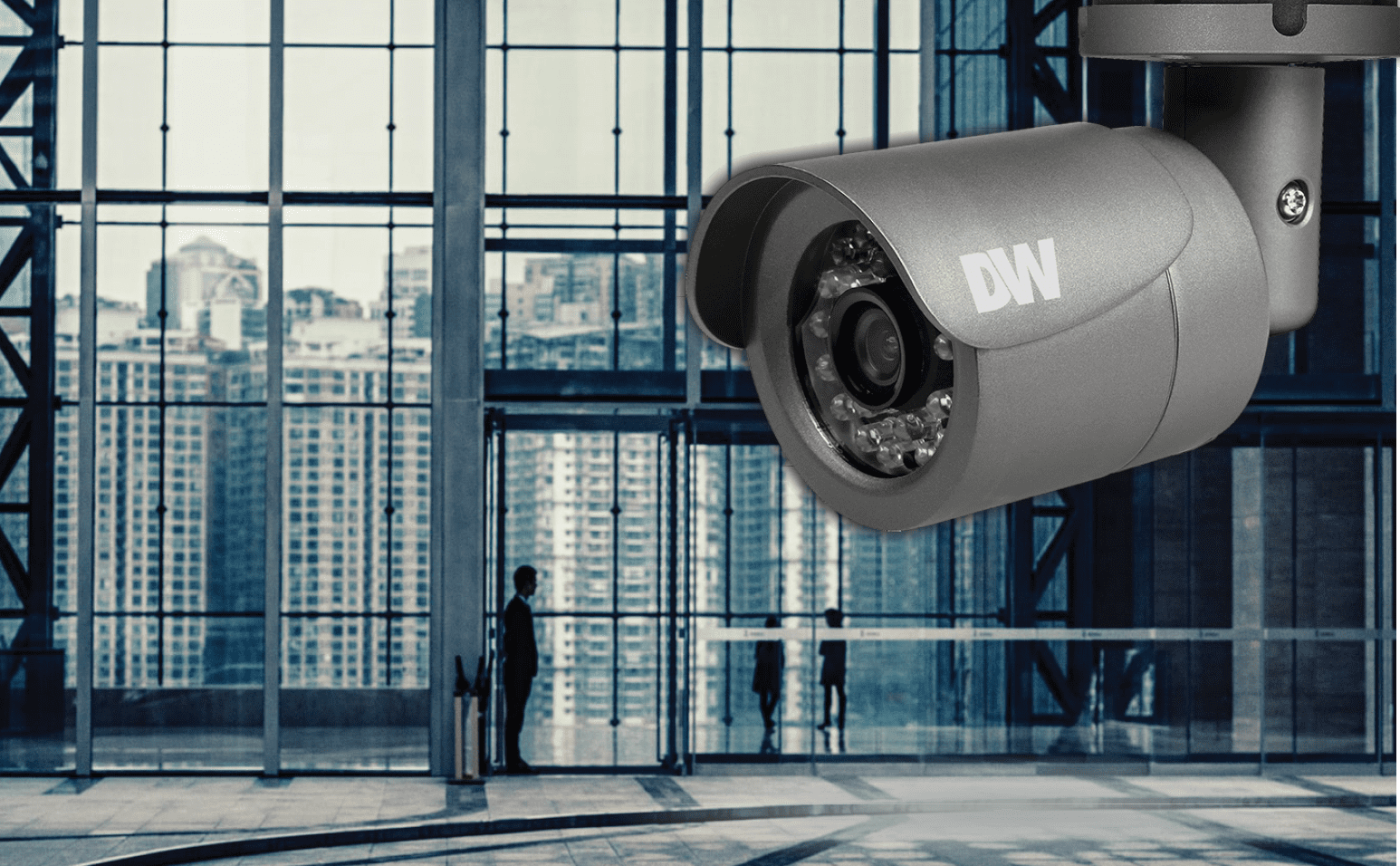 While the lower visibility of the dome camera is helpful in a number of situations, sometimes you want a more “in-your-face” approach to surveillance. A study of convicted burglars by the UNC Charlotte found that the visible presence of a surveillance system gave pause to 60% of would-be intruders, causing more than 40% of them to target a different mark entirely. For this reason, many business owners are looking for a “louder” option than a dome, especially when looking for external and perimeter-protecting cameras—a job for which a bullet camera is well-suited.
While the lower visibility of the dome camera is helpful in a number of situations, sometimes you want a more “in-your-face” approach to surveillance. A study of convicted burglars by the UNC Charlotte found that the visible presence of a surveillance system gave pause to 60% of would-be intruders, causing more than 40% of them to target a different mark entirely. For this reason, many business owners are looking for a “louder” option than a dome, especially when looking for external and perimeter-protecting cameras—a job for which a bullet camera is well-suited.
Bullet cameras—sometimes called “lipstick cameras”—are a natural evolution of the traditional “box” cameras. The bullet’s different shape offers different mounting options than the dome and are popular options for covering such areas as hallways, doors, and stairways. Unlike domes, bullets are easy to adjust without needing to move the mount or bring out the drill. They’re excellent at covering areas such as hallways, doors, and stairways. Their high visibility doesn’t just deter burglars, either: studies show that employees under visible surveillance are actually more productive than those who are not. However, their high visibility also leaves them more susceptible to vandalism and the elements, which means camera placement and features such as vandal resistance are critical in ensuring proper functionality and longevity.
Panning, tilting, and zooming with PTZ cameras
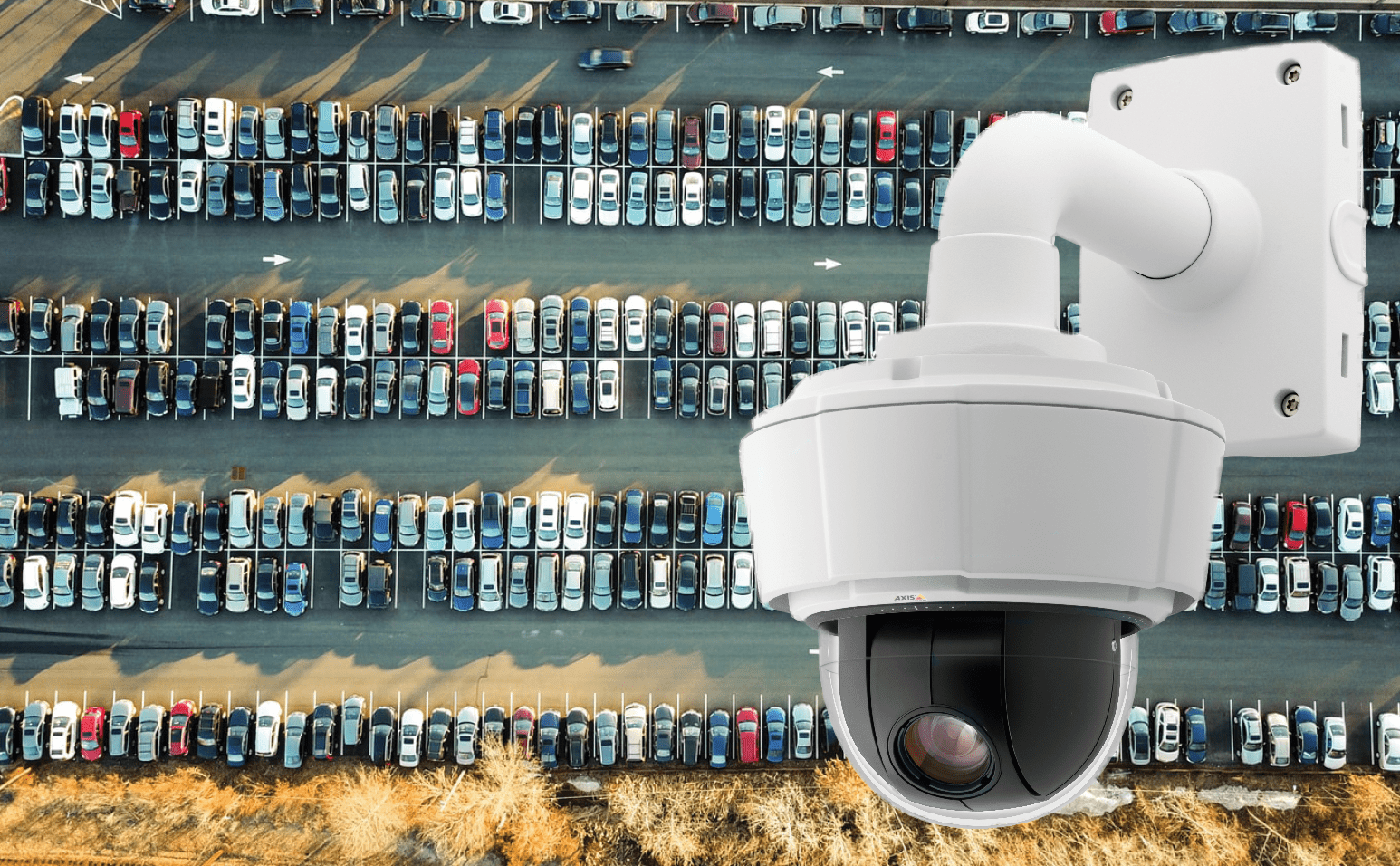 Protecting the corners of buildings can be a real hassle. A bullet camera or dome mounted at the outside corner of a building can only point in one direction, meaning anything happening outside of that camera’s range will go uncaptured. One could have multiple cameras pointing in multiple directions for better coverage, but it’s a pricey option. Additionally, a camera would be needed to point downward toward the ground to cover the blind spot directly below the cameras to allow for full coverage.
Protecting the corners of buildings can be a real hassle. A bullet camera or dome mounted at the outside corner of a building can only point in one direction, meaning anything happening outside of that camera’s range will go uncaptured. One could have multiple cameras pointing in multiple directions for better coverage, but it’s a pricey option. Additionally, a camera would be needed to point downward toward the ground to cover the blind spot directly below the cameras to allow for full coverage.
For many years, the solution to this problem has been PTZ cameras. PTZ cameras are named for their abilities to pan (move left to right), tilt (move up and down), and zoom in on special areas of interest. Their point of focus can be adjusted—either manually, with a joystick, or using an auto-tracking function to follow faces as they enter the camera’s view. They’re highly adaptable to most commercial environments and allow for superior flexibility in viewing range, which is why they’re often used to cover large outside areas, including work yards and parking lots.
The chief drawback to PTZs are that they function the best when operated by an actual person. Auto-tracking may follow one person walking, drawing the camera’s line of sight away from a more important target. The ability to program PTZs to move by themselves, called patrolling, contains the same inherent flaw: at this point in time, a computer is not as good at prioritizing the most important security vulnerability and tracking it. While the PTZ camera allows for a wider range of view and control, it does not eliminate blind spots—a goal that was only fully realized with the invention of the multi-sensor camera.
More for the price of one: the multi-sensor camera
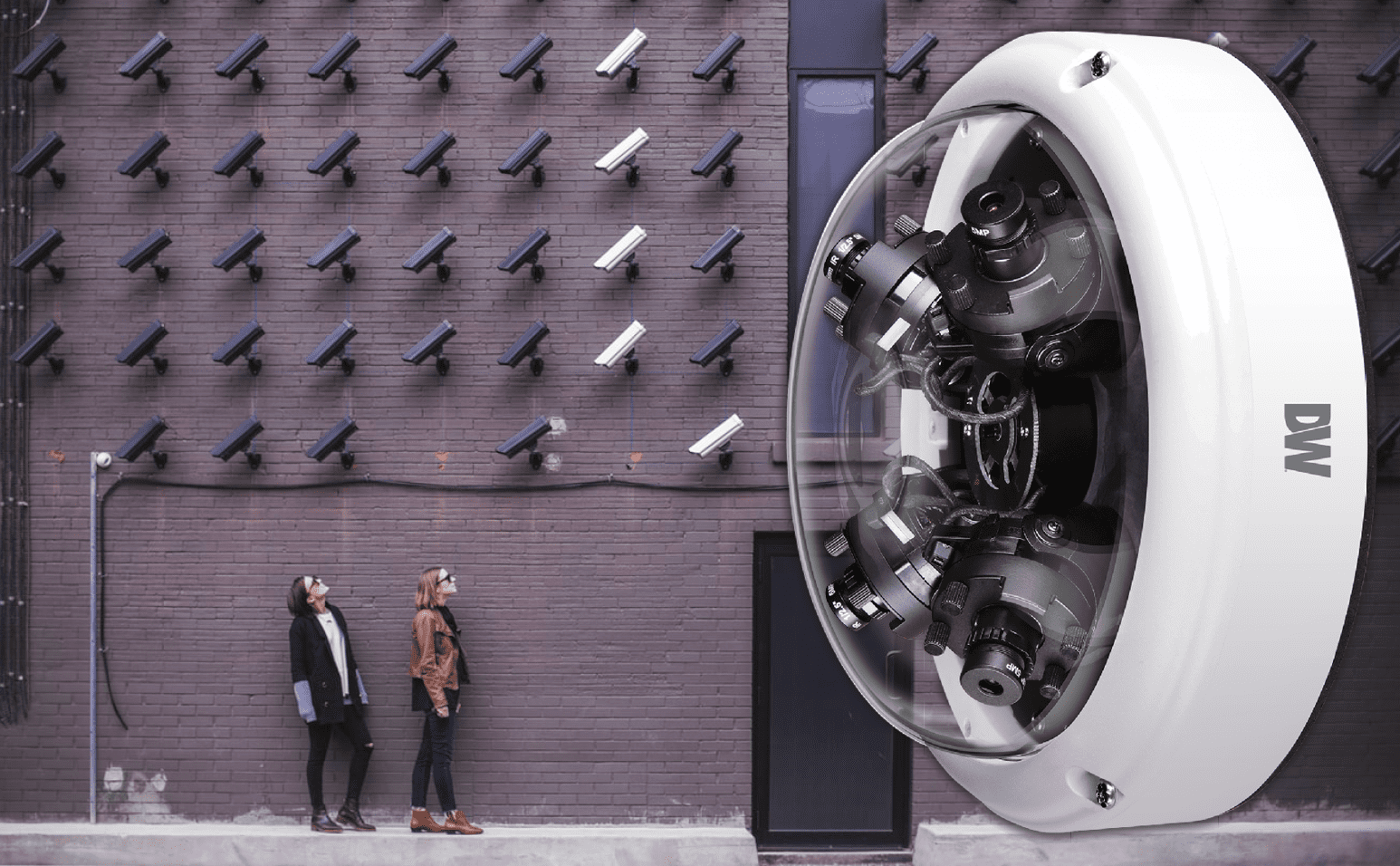 Multi-sensor cameras can contain as many as four individual camera heads (sensors) which can each be set to focus in different directions. Because of this ability to customize their viewing range, multi-sensors are perfect for coverage in scenarios where a single traditional camera wouldn’t cut it. The sensors can be arranged in a manner that provides panoramic, 180-degree views of wide expanses like work yards or parking lots. Multi-sensor cameras have become popular in schools for their ability to monitor the length of all four hallways from their intersection. At corners, the sensors can be configured to provide 270-degree coverage, with the fourth sensor pointed straight down to capture any activity below the camera mounting point. With this enhanced functionality, multi-sensor cameras eliminate the need for a human operator and the blind spots associated with PTZ cameras.
Multi-sensor cameras can contain as many as four individual camera heads (sensors) which can each be set to focus in different directions. Because of this ability to customize their viewing range, multi-sensors are perfect for coverage in scenarios where a single traditional camera wouldn’t cut it. The sensors can be arranged in a manner that provides panoramic, 180-degree views of wide expanses like work yards or parking lots. Multi-sensor cameras have become popular in schools for their ability to monitor the length of all four hallways from their intersection. At corners, the sensors can be configured to provide 270-degree coverage, with the fourth sensor pointed straight down to capture any activity below the camera mounting point. With this enhanced functionality, multi-sensor cameras eliminate the need for a human operator and the blind spots associated with PTZ cameras.
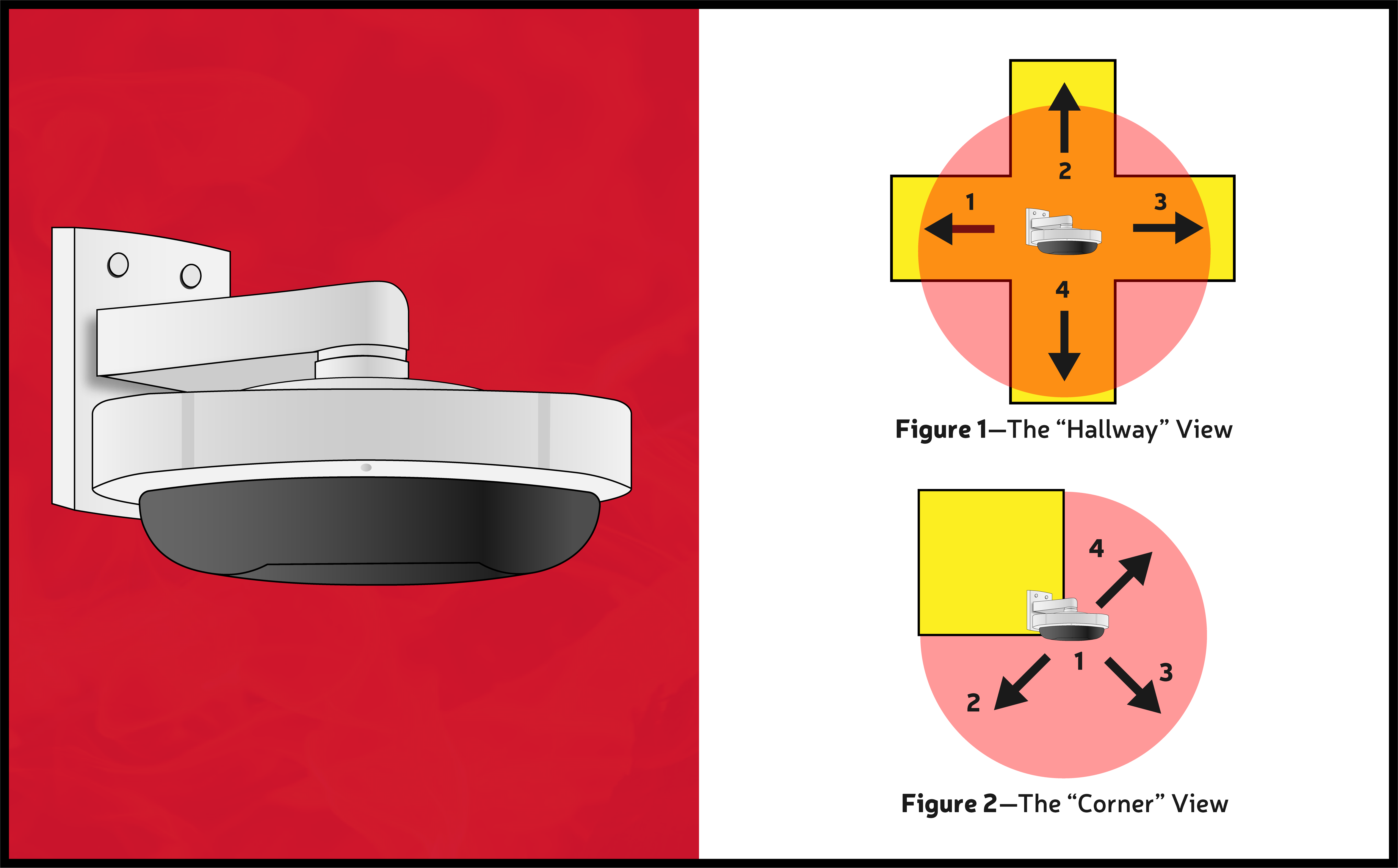 Multi-sensor cameras perform much like four individual cameras would, which often saves business owners money both immediately and in the long run. While multi-sensor cameras are typically pricier than a single box camera, investing in a single professionally installed multi-sensor camera can often be cheaper than paying fees for the hardware, installation, licensing, and maintenance of the four separate cameras it does the work of. Unlike PTZ cameras, there is no motor to maintain, meaning there are fewer parts to potentially replace. As such, multi-sensor cameras have become extremely popular solutions for securing everything from traffic intersections and schools to loading docks and sporting arenas. Their adaptability and superior coverage have turned the multi-sensor variety of surveillance camera into one of the most in-demand video cameras available on the market for businesses large and small, and for good reason.
Multi-sensor cameras perform much like four individual cameras would, which often saves business owners money both immediately and in the long run. While multi-sensor cameras are typically pricier than a single box camera, investing in a single professionally installed multi-sensor camera can often be cheaper than paying fees for the hardware, installation, licensing, and maintenance of the four separate cameras it does the work of. Unlike PTZ cameras, there is no motor to maintain, meaning there are fewer parts to potentially replace. As such, multi-sensor cameras have become extremely popular solutions for securing everything from traffic intersections and schools to loading docks and sporting arenas. Their adaptability and superior coverage have turned the multi-sensor variety of surveillance camera into one of the most in-demand video cameras available on the market for businesses large and small, and for good reason.
The EPS Advantage
Despite being the four most common cameras installed in EPS Security surveillance systems, dome, bullet, PTZ, and multi-sensor cameras by no means encompass the total scope of cameras available. Fisheye, telescopic, explosion-proof, height strip cameras, and more are used in specific situations to address niche security vulnerabilities or coverage needs. Coupled with the wide array of available cameras is the knowledge that each business is subject to its own unique layouts and security vulnerabilities, which means the engineering of a comprehensive security solution can get complex fast.
So how do you know which camera option works best for your business? In short: you don’t have to know. By choosing EPS Security to build your custom surveillance solution, you’re entrusting the security of your facilities to a company with more than six decades of experience in engineering and installing commercial security solutions. We’ll work with you to determine which cameras with which features will work best at covering what you need protected. In fact, we have entire teams of engineers, consultants, and installation technicians to design your custom solution and show you how your EPS system will protect what matters most to you. Whether you’re just starting your new business or looking to protect a successful enterprise, let EPS Security craft you a custom security solution 65 years in the making.
